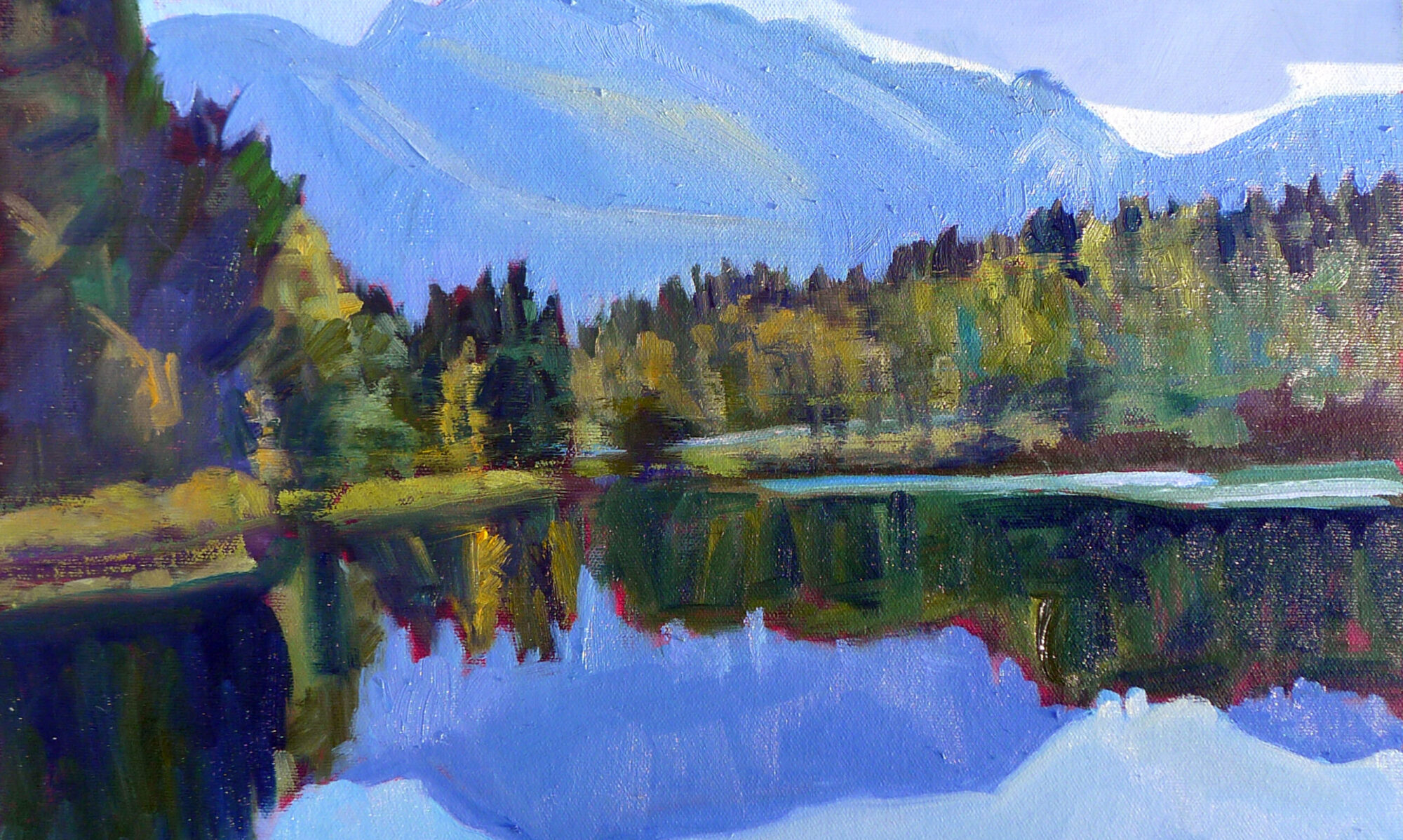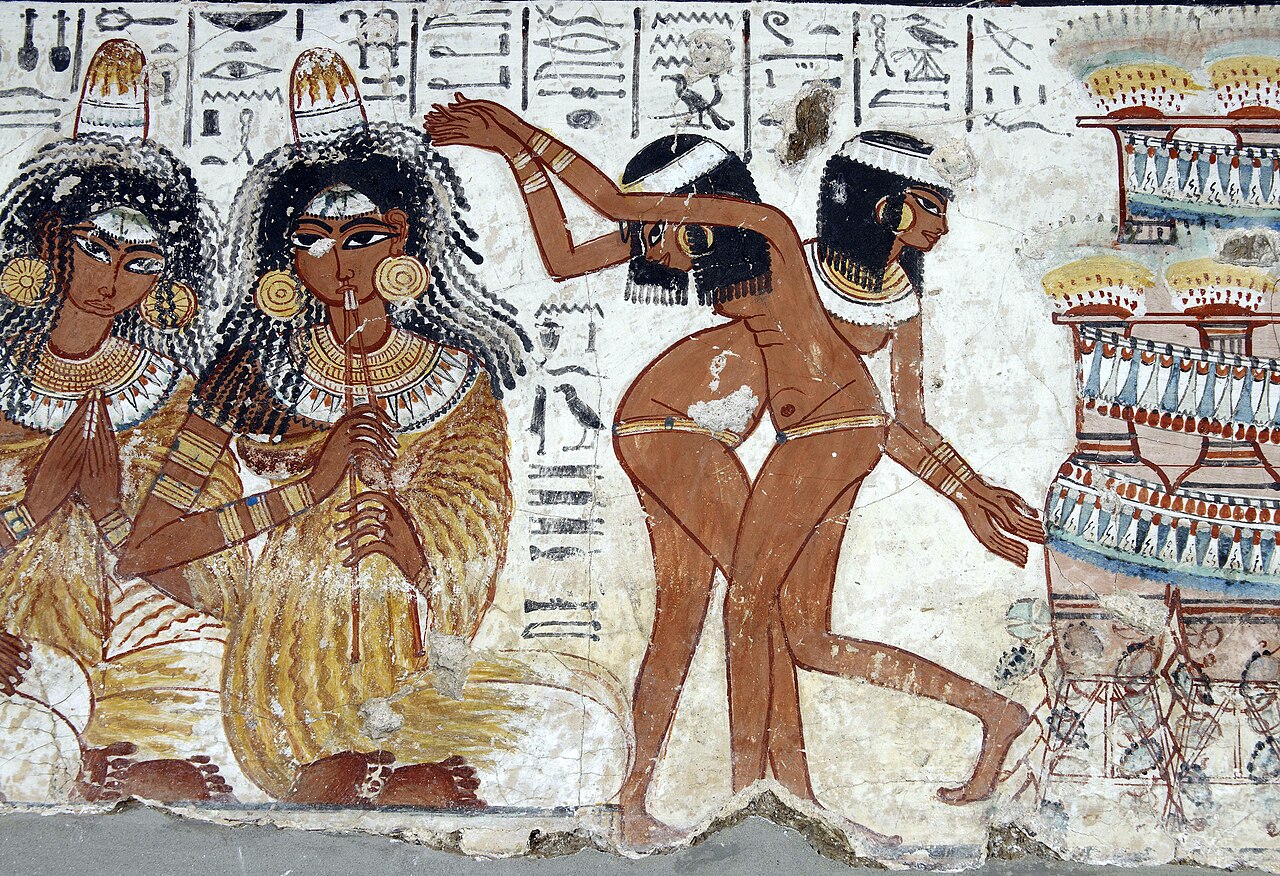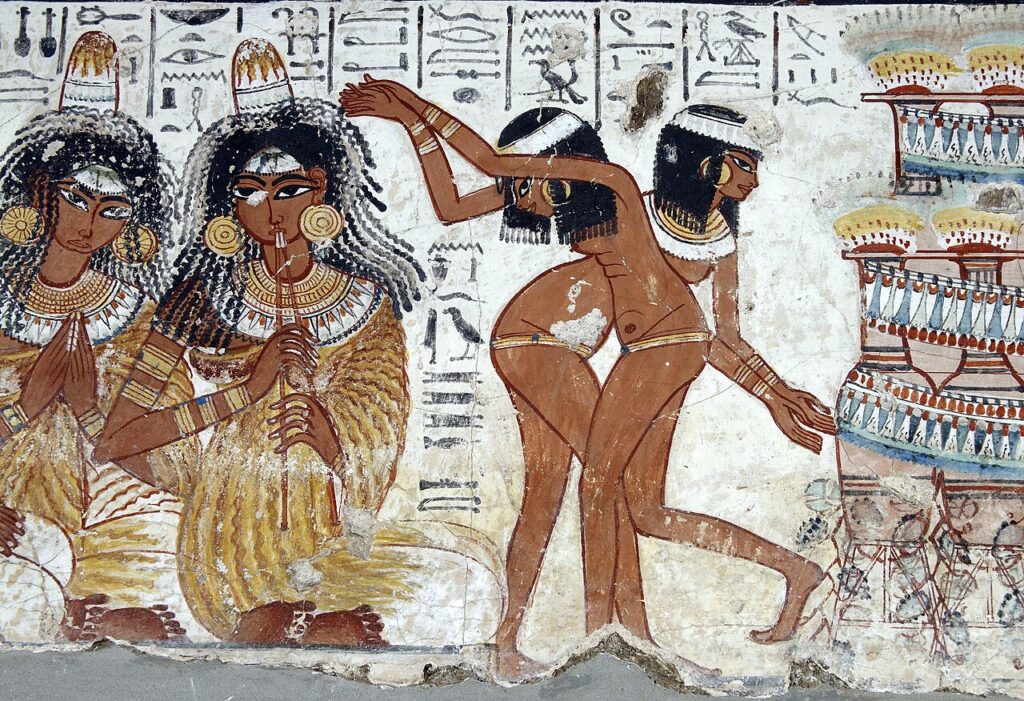
We live in curiously divided times. Pop media is suffused with sexuality, but nudes in art are aggressively quashed in social media. Ten years ago, I didn’t hesitate to illustrate a blog post with my own figure paintings; now I hope the algorithms are fooled by ancient Egyptian stylings into not seeing the painting above as figures.
The ancient world
One of the earliest known examples of nudes in art is the Venus of Willendorf, a small Paleolithic figurine. It has exaggerated breasts and hips and although it is said to be a fertility symbol, its purpose is, of course, unknown.
In ancient Egypt, nudes in art represented youth, fertility, and servitude. Nude subjects were children and servants, while gods and rulers were depicted clothed. In nearby Mesopotamia (modern Iraq, where some speculate the Garden of Eden was located), nudity was linked to religion and sex.
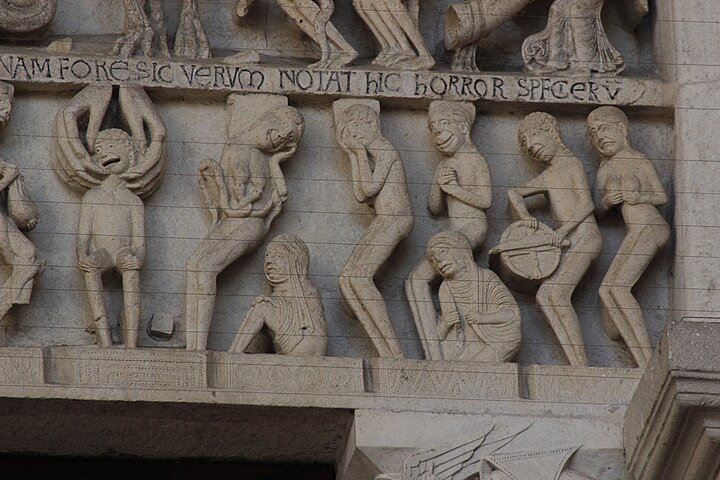
What were our ancestors doing?
The Greeks adored the nude male body, which represented heroism, virtue, athleticism, and divine beauty. But nude images of women were far less common, and limited to goddesses, prostitutes, and scenes of violence or suffering. Respectable Greek matrons simply didn’t wander around naked.
Ancient Rome shamelessly aped Greek art and attitudes. However, nudity in Roman art also represented an artistic confrontation with the new religion of Christianity.
As Christianity made inroads into the old religions of Rome, the old forms of Greco-Roman art began to be seen as sinful. The only safe expression of nudes in art were the ancient myths of gods and goddesses.
By the Middle Ages, Christianity was the dominant factor in western art. While casual nudity was avoided, there were exceptions. In Judeo-Christian tradition, Adam and Eve were happily naked until they ate of the fruit of the knowledge of good and evil. Then, they were ashamed. They could be painted nude as a cautionary tale. The infant Jesus could be painted nude because he was innocent of sin.
There were also naked depictions of the Last Judgment and martyrdoms of the saints, and the occasional symbolic nudes in Byzantine art and illuminated manuscripts.
The Renaissance meant a revival of Greco-Roman artistic ideals, which in turn led to an interest in mastering the human form. Artists like Michelangelo, Leonardo da Vinci, Titian, and Sondro Botticelli sought to tie anatomical accuracy with spiritual or allegorical meaning. These artists struck a balance between the spiritual and temporal realms.
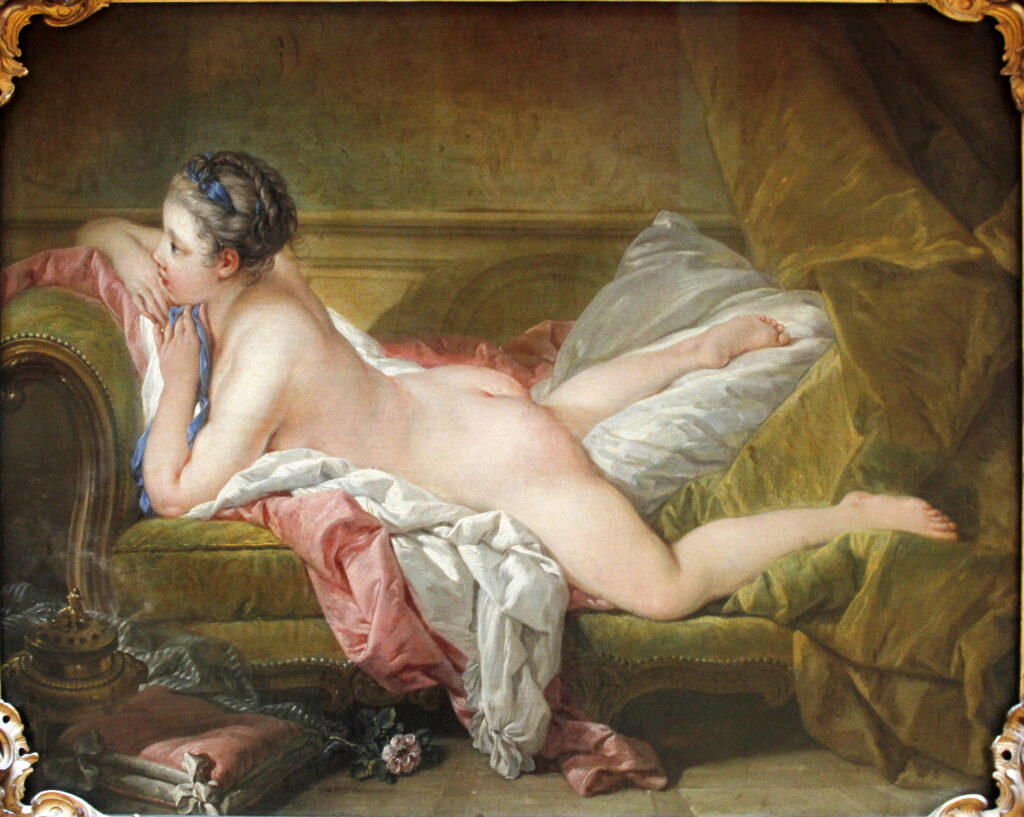
By the 17th century, however, Baroque artists like Peter Paul Rubens and Caravaggio had tipped the scales to the fleshly, fleshy world. Rococo painters like Jean-Honoré Fragonard and François Boucher turned toward voluptuous eroticism and fantasy.
But all pendulums swing, and once again, in the late 18th and early 19th century, artists like Jacques-Louis David and Jean-Auguste-Dominique Ingres returned to heroic, idealized forms, often referencing mythology. Romantic artists like Jean-Louis André Théodore Géricault and Eugène Delacroix used nudity to express emotion, suffering, and passion.
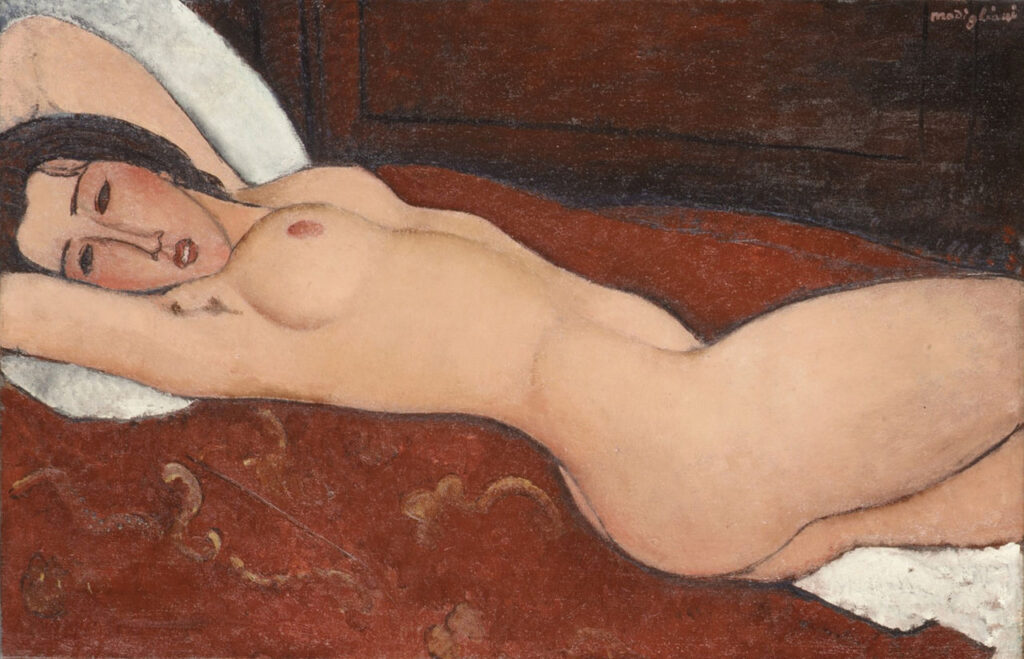
Our modern life
French Realists and Impressionists like Gustave Courbet, Édouard Manet, and Edgar Degas began to openly portray the nude provocatively. Courbet, in particular, was scandalous; in fact, he still shocks me.
Modernists like Pablo Picasso, Henri Matisse and Amedeo Modigliani deconstructed and dehumanized the nude. As the 20th century wore on, the nude became the battleground of both personal expression and sociopolitical challenge. That continues today, as the human form remains the locus for challenging gender norms, arguing politics, and discussing body image. That’s a lot of baggage for the poor old human body to carry.
Reserve your spot now for a workshop in 2025:
- Advanced Plein Air Painting, Rockport, ME, July 7-11, 2025.
- Sea and Sky at Acadia National Park, August 3-8, 2025.
- Find Your Authentic Voice in Plein Air, Berkshires, MA, August 11-15, 2025.
- Immersive In-Person Fall Workshop, Rockport, ME, October 6-10, 2025.
